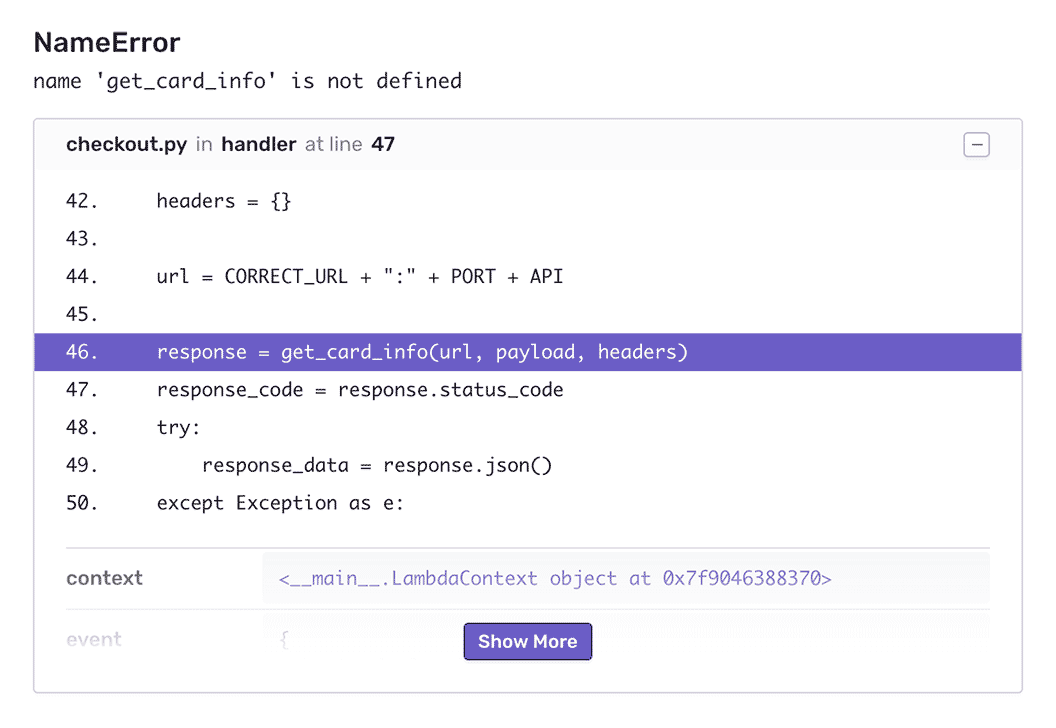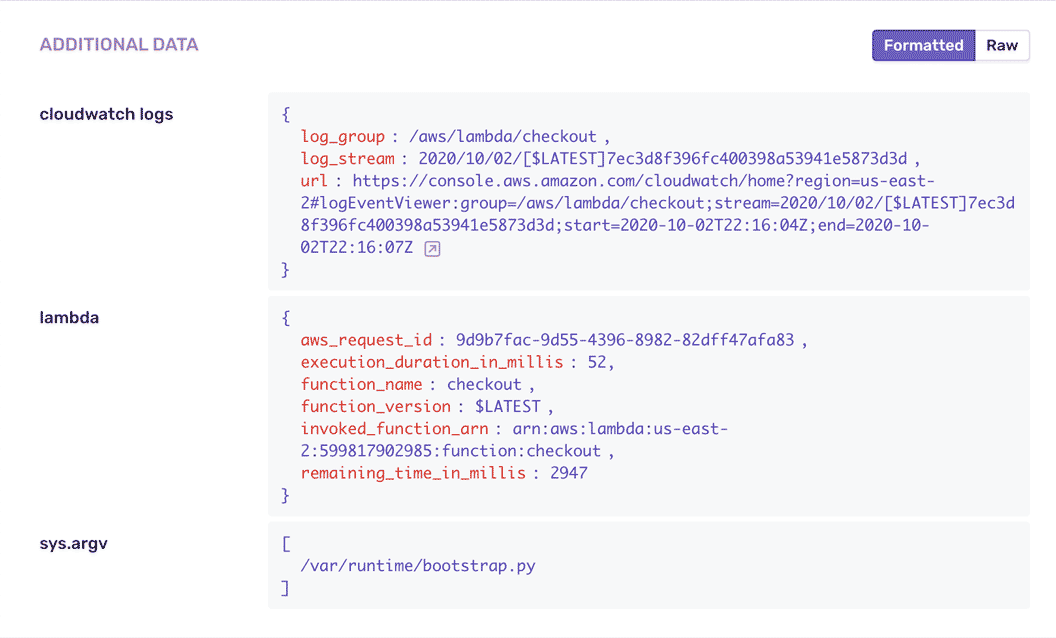
Serverless Error and Performance Monitoring
Using Sentry for Serverless makes debugging as painless as possible, so you can keep everything up and running.
Getting Started is Simple
Add @sentry/serverless as a dependency:
Click to Copy
npm install --save @sentry/aws-serverless
Then set up the AWS Lambda integration:
Click to Copy
const Sentry = require("@sentry/aws-serverless"); Sentry.init({ dsn: 'https://<key>@sentry.io/<project>', tracesSampleRate: 1.0, }); exports.handler = Sentry.wrapHandler(async (event, context) => { // Your handler code });
Check our documentation for the latest instructions.
See all platformsMore than 150K Organizations Trust Sentry with Their Application Monitoring

Code-Level Visibility
View stack traces on issues, user-agent information, and all the metadata around an issue for all the context needed to resolve the issue.

Quickly Identify Function Latencies
Trace those ten-second page loads to poor-performing API calls and slow database queries. The event detail waterfall visually highlights what calls are giving your customers a poor experience.

Fill in the Gaps
See what happened leading up to the issue. Get function execution details including function metadata, execution time, Amazon Resource Name, and function identity.